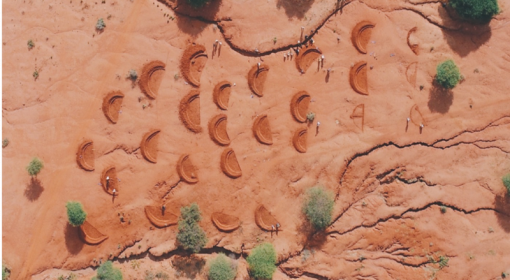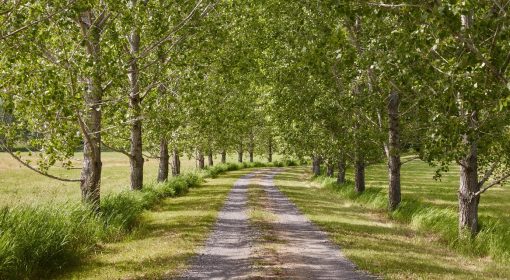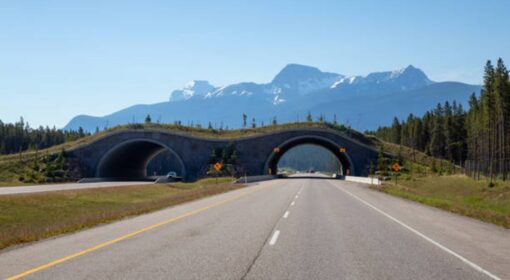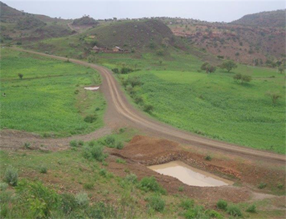By Frank van Steenbergen
The weight of the road sector in Asia is enormous. There were already 21 million kilometers of roads in Asia by 2020, according to the Asia Transport Outlook. By 2030 another 8 millon will be added. In addition, an unknown part of the existing network will be upgraded in the coming years.
This will wire the growing economy in Asia and also connect the still sizable population of Asia that lives at a distance of more than two kilometer from an all-weather road, at present as much as 26%[1].
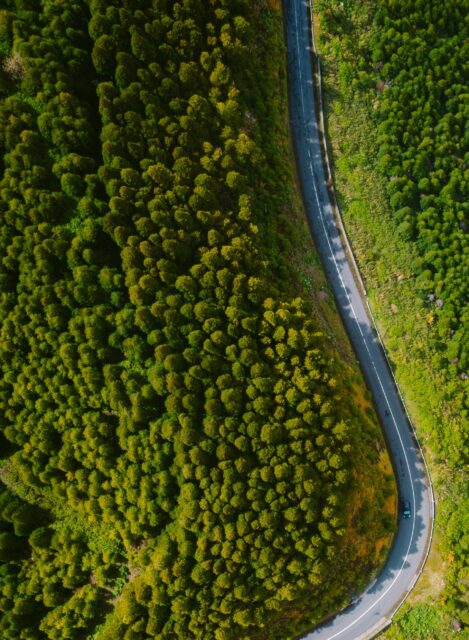
The size and the expected expansion of the road network Asia have wide ramifications. Roads are not only essential for connectivity and safe and affordable travel, but roads are also important on many agendas. Motorized road transport has been leading in the increase in carbon emissions. The motorized road sector is a major contributor (18%) to global CO2 emissions)[2].
Road development has changed the landscape hydrology all over Asia, causing for instance springs to dry up in high mountain areas, water logging to increase in coastal areas and flood to be amplified as roads have distorted the natural drainage. Estimates increase erosion in catchments with 12-40%[3].
Roads are also associated with biodiversity loss, dissecting, and disconnecting habitats of vertebrae and invertebrate alike. Roads are in many countries in the top three causes for animal kills.
Then roads have a huge impact on the quality of life. This can because of the heat, dust or noise that roads generate. Extrapolating figures from other areas 10 M healthy life years may be lost in Asia annually, due to sleeping disorders and mental disturbance caused by road noise. Conventional road development is also known to increase temperatures in cities and contribute to urban heat islands. Then roads produce and transport large quantities of dust, in fact roads are associated with one of the main sources of manmade dust.
Finally, roads – in particular in the wake of the continued construction drive – have an enormous footprint in the extraction of construction materials, equivalent to (30-40% of all construction material). In Asia in fact the demands for construction material increased with 64% over the last decade, whereas globally this was 17%[4].
All these massive impacts require a rethink on how roads are being built and maintained. With all the challenges roads should become green roads in several dimensions. Green Roads are roads that are an increasingly strong and positive part of economies and natural resource bases, serving people and the environment not only by connectivity and transport safety, but that also by actively contributing to combatting the climate crisis, enhancing the quality of life, fostering beneficial land and water use, contributing to disaster risk reduction, supporting strong ecologies, minimizing pollution, sourcing material sustainably, and boosting inclusive economies. This requires new processes to develop roads – opening to convergence with other sectors – and a rethink in policies, codes, contracts, and planning procedures.
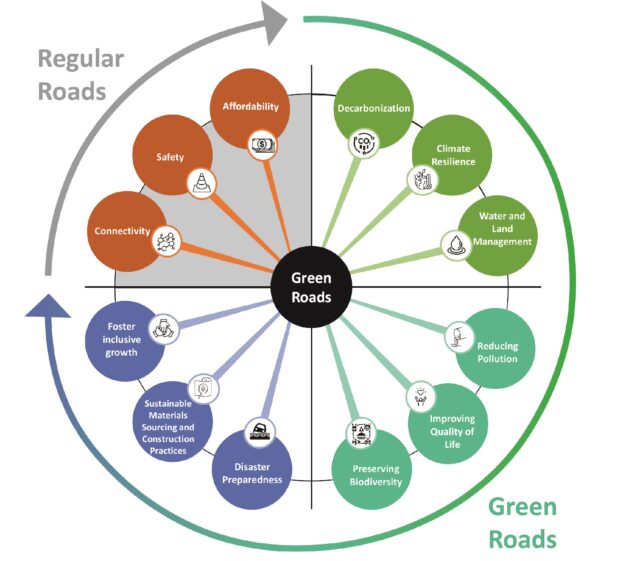
From Conventional Roads to Green Roads
In the last ten years the Asian Development Bank has worked on a number of aspects of the Green Roads agenda. Some elements, for instance decarbonization and biodiversity protection, are already reflected in guidance notes, sustainable procurement, or even safeguards (noise, air pollutions). Other dimensions are not. To support a systematic change in the narrative and practice in road development and maintenance in Asia, the Asian Development Bank has commissioned the development of a Green Roads Toolkit, supported with program checklists and guidance also in policy and practice change. In the workshop on Climate Resilient Transport the Toolkit was first discussed, including the nine dimension, the underlying intervention areas and practices.
With Green Roads the first challenge is to undo or least drastically minimize the harmful effect of road development – pollution, carbon emission, damage to landscape. There are important practices that can turn things around dramatically, such as the use of recycled material in roads, new composition of road material, the systematic use of road bodies to contribute to better water management in their areas. Roads can also be systematic instruments in disaster risk reduction – as safe shelters and by controlling the incidence of a natural disaster. Roads can also be part of the ecological management of their environment, with better management road verges and under and overpasses suitable to animal crossings. There are several examples where roads not only ‘do no harm’ but can become nature-positive investments.
To meet increasing demand ADB estimates the costs of transport infrastructure requirements in Asia and the Pacific region to be more than $520 billion a year.[5] Hence the need to introduce green and inclusive roads. The investment needs to set new models to align Asia with a sustainable and resilient future. The massive road investment can also be used to spearhead inclusive growth by creating last-mile access but also importantly to use the massive spending to create local employment and capacities and to stimulate local economies by local sourcing.
[1] ADB (2022), Asia Transport 2030 Outlook.
[2] Liu, N., Wang, Y., Bai, Q., Liu, Y., Wang, P. S., Xue, S., … & Li, Q. (2022). Road life-cycle carbon dioxide emissions and emission reduction technologies: A review. Journal of Traffic and Transportation Engineering (English Edition).
https://www.sciencedirect.com/science/article/pii/S2095756422000587#bib54
[3] Frank van Steenbergen, Fatima Arroyo-Arroyo, Kulwinder Rao, Taye Alemayehu Hulluka, Kifle Woldearegay and Anastasia Deligianni (2021), Green Roads for Water: Guidelines for Road Infrastructure in Support of Water Management and Climate Resilience
[4] Source: Global demand for asphalt to reach 121mn tonnes | Aggregates Business (aggbusiness.com)
[5] United Nations Department of Economic and Social Affairs (UNESCAP). 2020. World Urbanization Prospects 2018. New York
